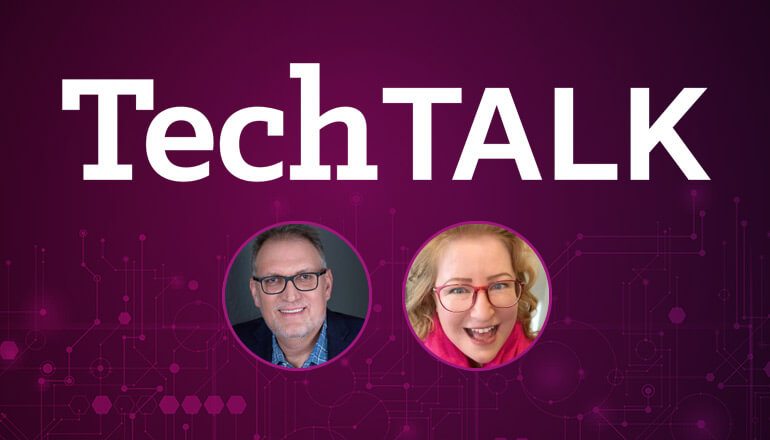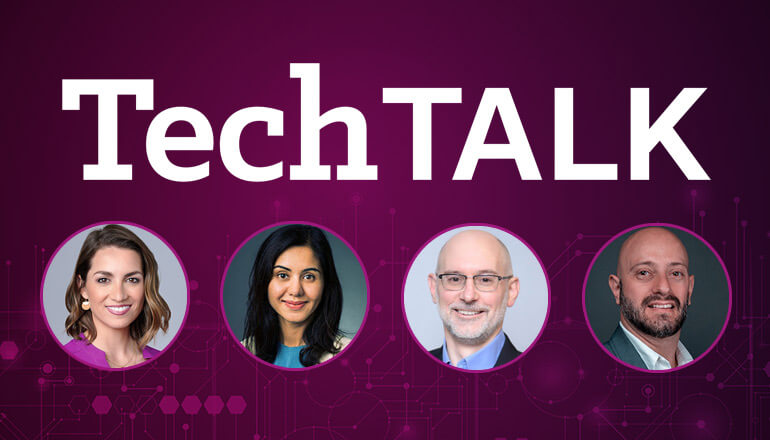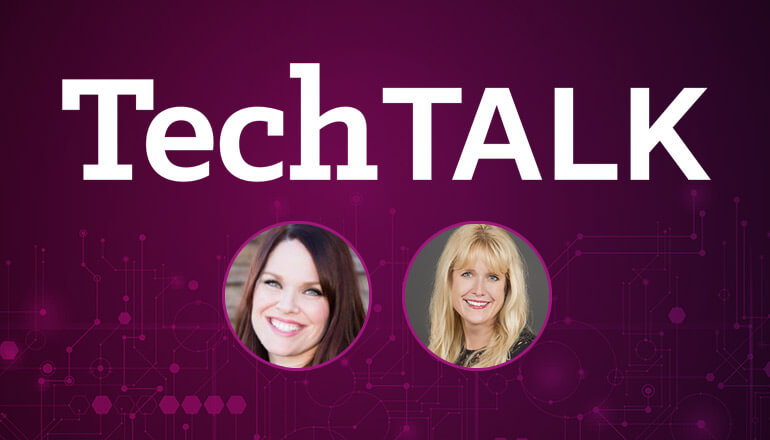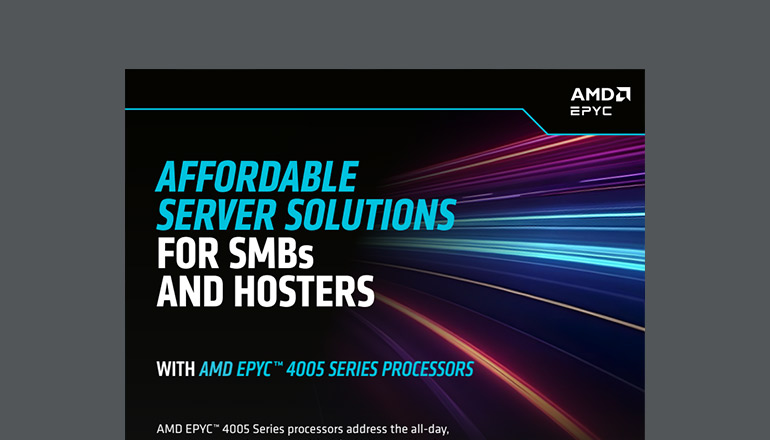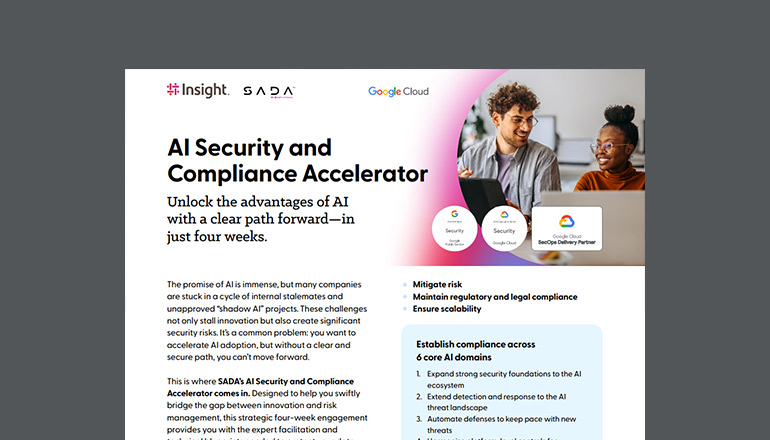Audio transcript:
Providing Secure Infrastructure for the Future of IoT
Published July 28, 2020
[Music]
MIKE
Hi, everyone, welcome to Insight TechTalk, my name is Mike Moore Practice Development Manager here at Insight, today we're gonna be talking about secure networking and the future of IoT.
To join me in that discussion, we have our Practice Director Network and Integrated Security Mr. Rob Parsons. Rob, how you doing today?
ROB
Great, thanks for having me Mike.
MIKE
Oh, I'm glad to be chatting with you. So Rob and I, we are both from Insight Cloud and Data Center Transformation solutionary. And what we really get to do on that team is help our clients modernize their IT infrastructure, whether that's enterprise networking data center to cloud and security.
So for IT initiatives like this, like IoT, it's really in our wheelhouse. So if you guys have been following the LinkedIn or sorry, the TechTalk series, we actually had our digital innovation team on there talking about connected platform for the prevention and detection and that was really talked about IoT and how we can leverage those devices to get meaningful insights out of all that data from them.
So today, we're gonna talk more about the infrastructure side of the house, how we can connect those devices to our networks, and how we can do so securely, to make sure that we're able to get all of that data and provide those meaningful insights that we get through IoT initiative.
So with that, Rob, I kinda wanna kick it over to you, and maybe you could give us a brief description of IoT, what it really means to you and how we're kind of seeing trending of IoT devices connecting to networks of today.
ROB
Yeah, thanks, Mike. So, you know, IoT just obviously stands for Internet of Things, but to me, it's really the collision of IT and OT where those two come together. And you know, that's our IT infrastructure, the networks, that data systems, the storage environments that all exist in IT to be able to conduct our business in a day to day operation, but then the OT side of things, the operational technology, so the plant manufacturing, the sensors that are there that are part of operational systems that organizations use to do their business as well, where we're at an inflection point where those two things are coming together. And we need to get the information from the operation side of the business into the information technology side of the business, to be able to leverage it, and make some intelligent decisions and ultimately advance how businesses operate. So the whole focus is around driving an outcome, of better business, smarter business. And that's one of our charters is to help businesses run smarter through the application of technology and IoT is one of those things that helps us to do that. So like you mentioned, we're focused more on the infrastructure side of the IoT. So when we talk about IoT, how do we get devices connected? Are we using WiFi? Are we using Ethernet connections? Are they connected to some sort of wireless connection somewhere that aggregates maybe does some data processing at the edge and then data moves up to the cloud? There's a lot of different ways that we can connect those devices. So, you know, so much capability is at our fingertips with IoT right now, and we're just scratching the surface of the intelligence that it can bring to organizations to help them to run more effectively in the current times.
MIKE
Yeah, and can you give us some examples, maybe from different verticals of what type of IoT devices we're seeing out there as we go and talk to different clients, how they're connecting to the network, specifically, how they're approaching security around these types of devices?
ROB
Yeah, so I heard a couple of things there. So you know, I mentioned the sensors already. So you're using sensors to gain intelligence, think of a healthcare environment where you need to keep vaccines or something thing like that in a certain temperature in refrigerator. So gathering intelligence from those refrigerators at the actual temperature of those to be able to report back if there's any outage or any issue, you help reduce waste, reduce loss, there's a lot of capabilities there. So that's the healthcare side of things.
You know, another one to talk about is manufacturing. And this is one of my favorites 'cause I actually had to work with this customer and do some cool stuff, they implemented some what were really called laser guided vehicles, but they were doing a couple things. So one, lasers would guide the basically forklifts to be able to pick product in a warehouse manufacturing type environment. But then those forklifts were guided through the warehouse with WiFi. So the WiFi would be able to track them, identify where they're at, and a very robust wireless solution was required, because if they would drop a WiFi connection from a safety perspective, they have to stop until they regain connection, and also the other robotic forklifts around them have to stop to make sure that there wasn't a collision of these really expensive devices. So when they work, they work really well, they really drive down efficiency, but we have to make sure that the right infrastructure is in place to be able to give them the service that they need and in that case, it was a seamless WiFi environment.
Now, the other thing that you asked about the tail end was about security. So absolutely has to be top of mind in any sort of IoT environment. I think there have been enough breaches in the news that everybody's thinking about it from when they start implementing IoT I think there's a pretty famous example out there that revolves around the HVAC systems in a particular organization at this point. But that could really apply to any IoT systems.
So making sure that you've got that edge level security for those devices, and then proper segmentation is also key. So making sure that we're isolating devices and the traffic patterns that they follow to make sure that they're not behaving unexpectedly. So there's some cool stuffs that we do with like behavioral analytics that can help. So if you see a device that's stepping outside of its norm, you can sandbox and quarantine it, stop it from otherwise communicating until you maintain it, or you manage its security. You know, you can do some good stuff with network segmentation both in the enterprise and then in the data center to make sure that, an IoT device that needs to talk to a single server isn't now talking to other things that are outside of that, you know, maybe, or maybe you wanna prevent East West communication as well. Maybe one device should be able to talk to the others, because they only need to communicate upstream to a server.
So having those rules sets in place really helps you to reduce your attack surface from security perspective, and ultimately optimize your environment for ease of management, but also greater security.
MIKE
Yeah, and that really is an issue we're seeing with networks of today, right? No longer do you live kind of in that enterprise network in a bubble where you have a perimeter, it's almost like that perimeter has been permeated. It goes everywhere. So no longer having a firewall sitting at the edge is gonna protect you from, like these IoT devices, 'cause a lot of that communication, like you said is that East to West, it's a machine to machine type traffic, or even to a server in your data center. So definitely designs and the thoughts about these networks really have to change for us.
So the question I'm getting to there is when we're approaching IoT or trying to implement an IoT strategy, what really should everybody be considering as they approach it? Is there an adoption lifecycle? I know we've talked about a little what are your thoughts on that?
ROB
Yeah, definitely we have a fairly structured methodology that we follow around IoT and that helps us to ultimately drive consistent outcomes for our clients. And really, we start with assessing an environment and there are a number of different ways to look at this, but you wanna understand the IT infrastructure, you wanna understand the OT infrastructure, the wireless connectivity is usually critically important, as is the security infrastructure, and then ultimately, the data center, the compute, the storage that supports that as well.
So you need to get good baseline for where you're at, and some organizations are already down the path, and they need to take a look at where they're at so that they can continue that path. Others are thinking that they're gonna start this new, and it's really good to baseline where you're at because you're gonna put a new load on the network, and it could be potentially an impacting load. You know, you talk about streaming video and some other stuff we've done, some cool applications, you mentioned the connected platform that our digital innovation team operates, so they do some really cool stuff with cameras that pulls IoT information into their connected platform system. And some of that can really aggregate a lot of data, so you need to be mindful of the storage and where are you putting that. And do you wanna put it in the Cloud where storage may be more expensive? Do you wanna keep it on-prem? There's a number of different angles that you can go there, but you need that baseline. And then they really like to look at a recurring type of touch point as well. We've got a number of large customers that do IoT type of stuff, and what we found is that while you're not looking overnight, you can have a huge influx of IoT devices come into your environment, and if you're not watching that, if you're not doing a six month or annual checkup, and reevaluation of where you're at, you could have a lot of devices on your network, or going through a security gateway or something that could start to be a choke point in your environment start to impact your performance. And ultimately, you need to maintain that high level of availability and capability to be able to get the outcome that you're looking for from an IoT type of solution. So that's absolutely critical.
MIKE
That's great, Rob, I appreciate that. I know we're getting towards the end of our time here, so I think that's great advice. I think we really just hit the tip of the iceberg for really what it takes to implement IoT in your environment and what that secure networking infrastructure looks like. So if you have any questions, definitely please feel free to reach out but that is all we have for you today. Rob, I appreciate your time on the TechTalk and thank you for joining.
ROB
Have a good day.
[Music]



